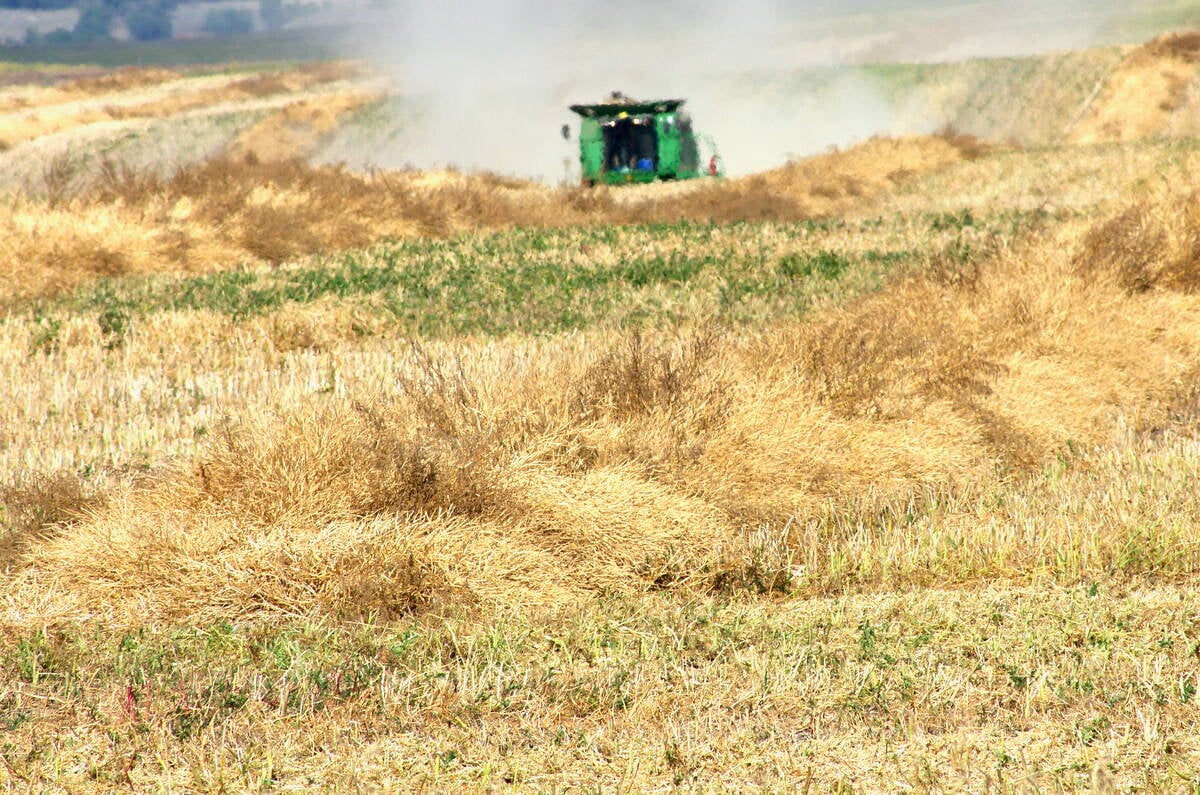Those of you who are of sufficient age might remember whitewashing. It was made famous by Mark Twain’s character, Tom Sawyer, who, after playing hooky, receives the punishment of whitewashing a fence.
Whitewash was like a paint and was used to uniformly cover up weathered wood, often rough-boarded barns, transforming their appearance into something more pleasant.
Over the years, the word whitewashing has also come to describe a cover-up or falsification of truth.
More recently, the term greenwashing has come into vogue. It describes products that are purported to be green or better for the environment, but which on closer examination provide little benefit over non-green options.
Read Also

Manitoba searches for Plan B on canola oil exports
A new report explores Manitoba’s current canola oil trade and possible alternative markets to the U.S.
It is not easy to determine which things are green and which ones are greenwashed.
Marketers know that most of us want to do the right thing for the environment. Some companies genuinely make their products in an environmentally progressive way and rightfully want to tell us so.
Others are less interested in real change and more interested in cashing in on our propensity to favour things that we believe are better choices.
In some cases, the most suspicious products are those that are produced in the colour green or use the words “green,” “eco” or “natural” in their name. These products can include dish detergent, building insulation and all kinds of food products.
They may in fact be better products or they may be different in name only. As beauty is only skin deep, so are some of these green claims.
Products can also be more or less green depending on how strictly they are viewed. Is a hybrid car really more green because it uses 25 percent less fuel than a conventional vehicle, given that it is still an air-polluting vehicle?
There are questions that consumers can ask when trying to determine whether a product is more environmentally sound:
- Does a product take less energy and fewer resources in its production or in use?
- Does it produce less waste and dangerous byproducts in its manufacturing, installation or use?
- Does it save energy in its use and how does that compare with the energy used in its manufacture?
- How much energy is involved in its transport?
- Is it safer for people who come into contact with it?
- What is the life cycle cost?
- Is it recyclable and/or inert when its working life is done or is it detrimental in some way on an on-going basis?
Determining if your dishwashing detergent is green is probably much harder than determining the greenness of larger impact products.
It’s difficult for individuals to easily verify green claims, but fortunately there are organizations that provide product guidelines or report cards that indicate if they pass certain standards. For example, the Energuide program for appliances is factual and rates appliances on their energy efficiency along a spectrum in ways that are easy to understand.
The Forest Stewardship Council has provided certification to companies practicing auditable and sustainable forest management for many decades and with increasing acceptance.
The products carry the FSC logo and are readily available in major stores. Consumers who buy a FSC-certified product know that the soil, wildlife, biodiversity and aboriginal rights were respected in its production.
Buildings have the Leadership in Energy and Environmental Design (LEED) program, which is a comprehensive checklist system used particularly for commercial buildings but also for housing and communities.
LEED uses many criteria, including the site’s vicinity to public transit, re-using material already on site, the distance that construction products are moved to the site and the collection and use of water on site.
The R-2000 and Build Green programs provide a measure of environmental accountability, while the PassivHaus system, which is new to North America, has a standard re-sulting in 80 percent less annual energy use than that used in conventionally built houses.
It is important that public buildings meet strong minimum standards, particularly products that affect the health of people using those buildings, especially schools. For example, there are certification standards to ensure that materials don’t hurt air quality through off-gassing.
Commercial enterprises, particularly commercial construction, include professionals whose job is to ensure that products meet strict standards.
It is more difficult for laypeople to determine the authenticity of a claim without significant and intensive research. As well, products and certification programs are constantly changing, meaning last year’s re-search may already be out of date.
It might be useful if governments developed green standards, but they have been relatively inactive, except with building codes, and those are hardly leading the way.
There are several reasons for government’s lack of involvement: other priorities, budget cuts, change in public policy regarding government’s role, and possibly just be-cause things change too fast and in too many directions for governments to keep up.
Green product claims require healthy skepticism and much scrutiny. Consumers who want to get answers are going to have to undertake due diligence and spend some time researching the products.
The internet is a useful tool, as are the steady stream of publications and books that focus on products’ green status.
Consumers must still be on guard against greenwashing, but with some effort they can be sure that they really are getting what they pay for when choosing more environmentally friendly products and services.














